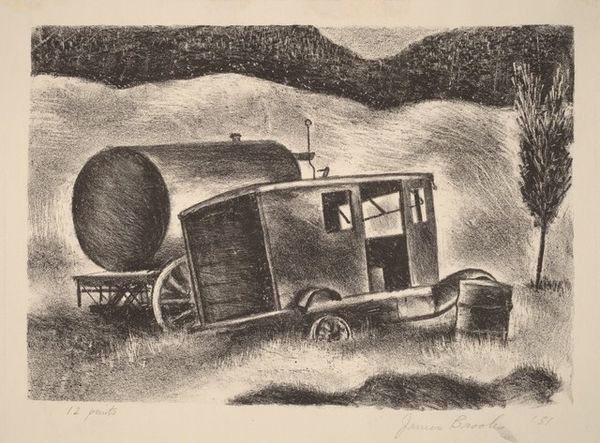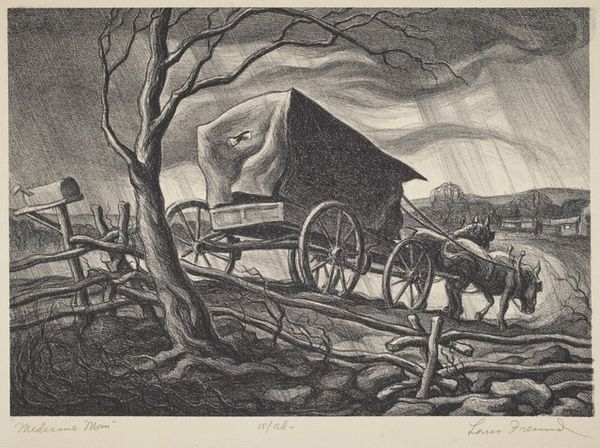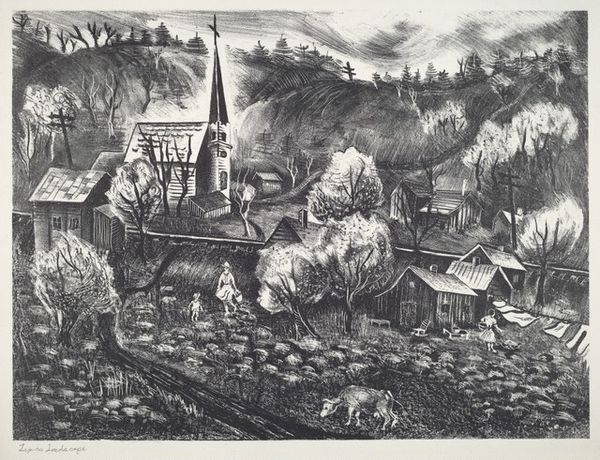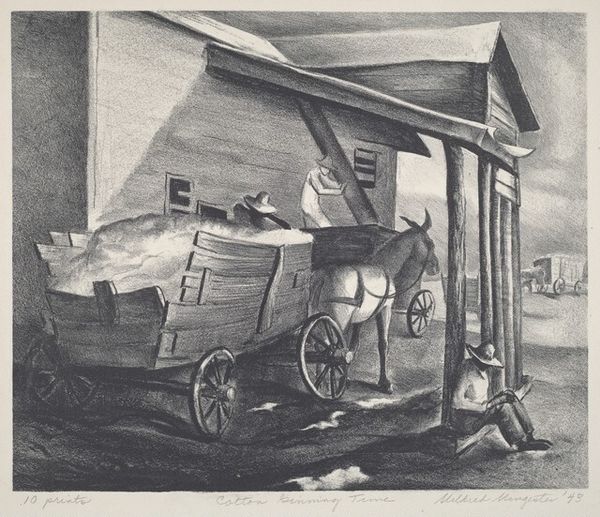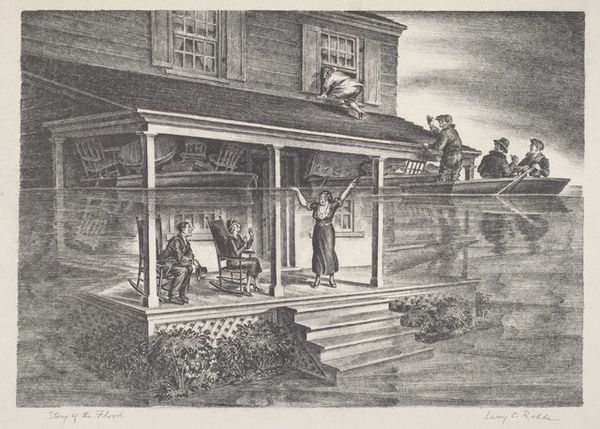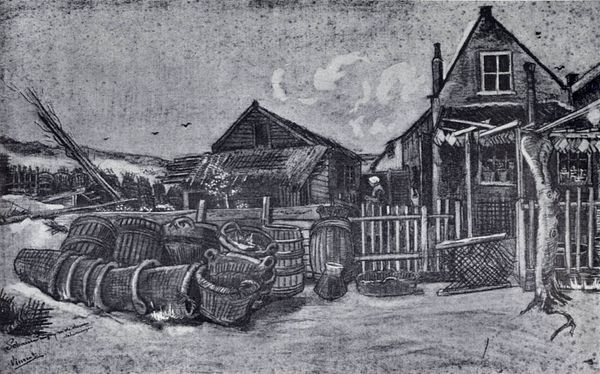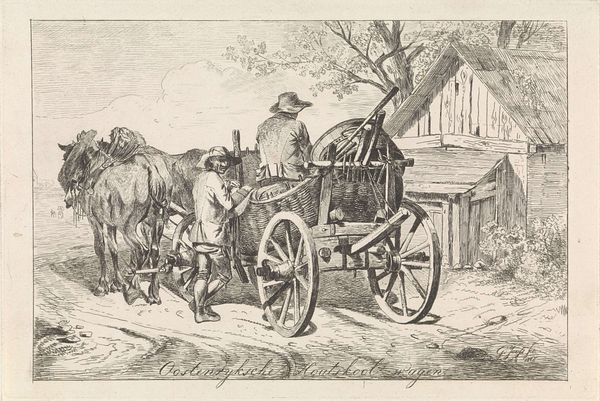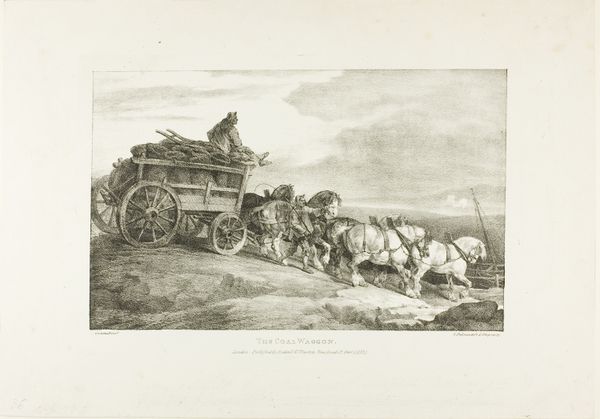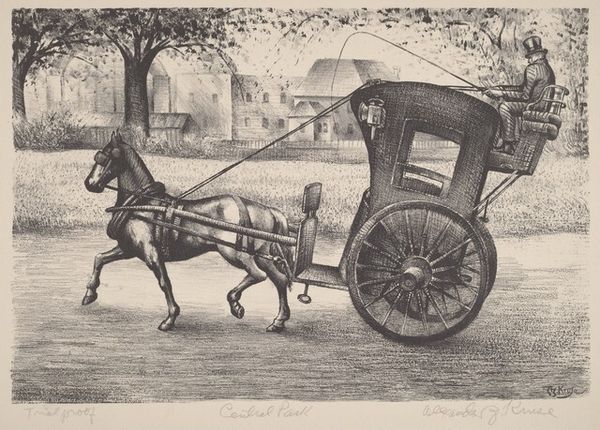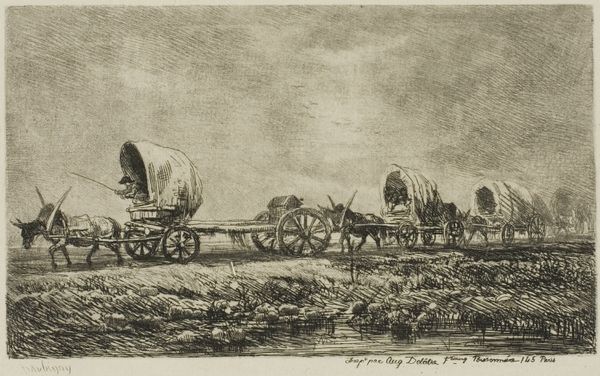
print, etching, woodcut
#
narrative-art
# print
#
etching
#
landscape
#
woodcut
#
realism
Dimensions: stone: --- x ca. 387 mm image: 228 x 312 mm sheet: 281 x 431 mm
Copyright: National Gallery of Art: CC0 1.0
Curator: This rather subdued composition is called "Circus, No. 1." Cooper Nott Lansing completed this etching and woodcut in 1942. Editor: My immediate reaction is one of melancholy, despite the title suggesting a circus, a place of supposed joy. The monochrome palette and indistinct figures evoke a sense of weariness. Curator: That’s a fascinating observation. The circus, in a sense, becomes a potent symbol here, perhaps representing entertainment as a kind of laborious enterprise during wartime, a period etched with global unease. Notice the elephant and workers in the center of the composition—they're dwarfed by the heavy equipment and big top in the background. It brings a palpable sense of the working class's labor and their reliance on animals for assistance, almost feeling like enslavement. Editor: I’m struck by the way Lansing contrasts the almost dreamlike moonlit sky with the gritty realism of the foreground. The figures appear flattened, dehumanized in a way, reinforcing that feeling of forced participation in a spectacle. This invites us to question the supposed freedom that circuses were understood to embody, doesn’t it? This work sits squarely within a broader dialogue of power and exploitation. Circuses can certainly be interpreted as allegories for capitalist excess and exploitation. Curator: The choice of combining woodcut and etching further enhances this contrast. The bold lines of the woodcut ground us in the physical world while the etching offers nuanced tonality, hinting at emotional complexities that exist in counterpoint to our own world. Editor: It really reframes the traditional iconography of the circus. Here, the spectacle isn't so much about skill or entertainment, but labor and survival during wartime, creating an ironic critique of this American institution. It reminds us that even forms of entertainment are imbued with complex social and economic histories, too. Curator: Absolutely. Lansing’s "Circus, No. 1" becomes a somber reminder of the nuanced realities beneath even our most beloved cultural events. Editor: It forces us to reconsider these forms, highlighting social issues that transcend the big top itself. This print stands as a testament to the social function of art, offering alternative realities and interpretations of everyday encounters.
Comments
No comments
Be the first to comment and join the conversation on the ultimate creative platform.
